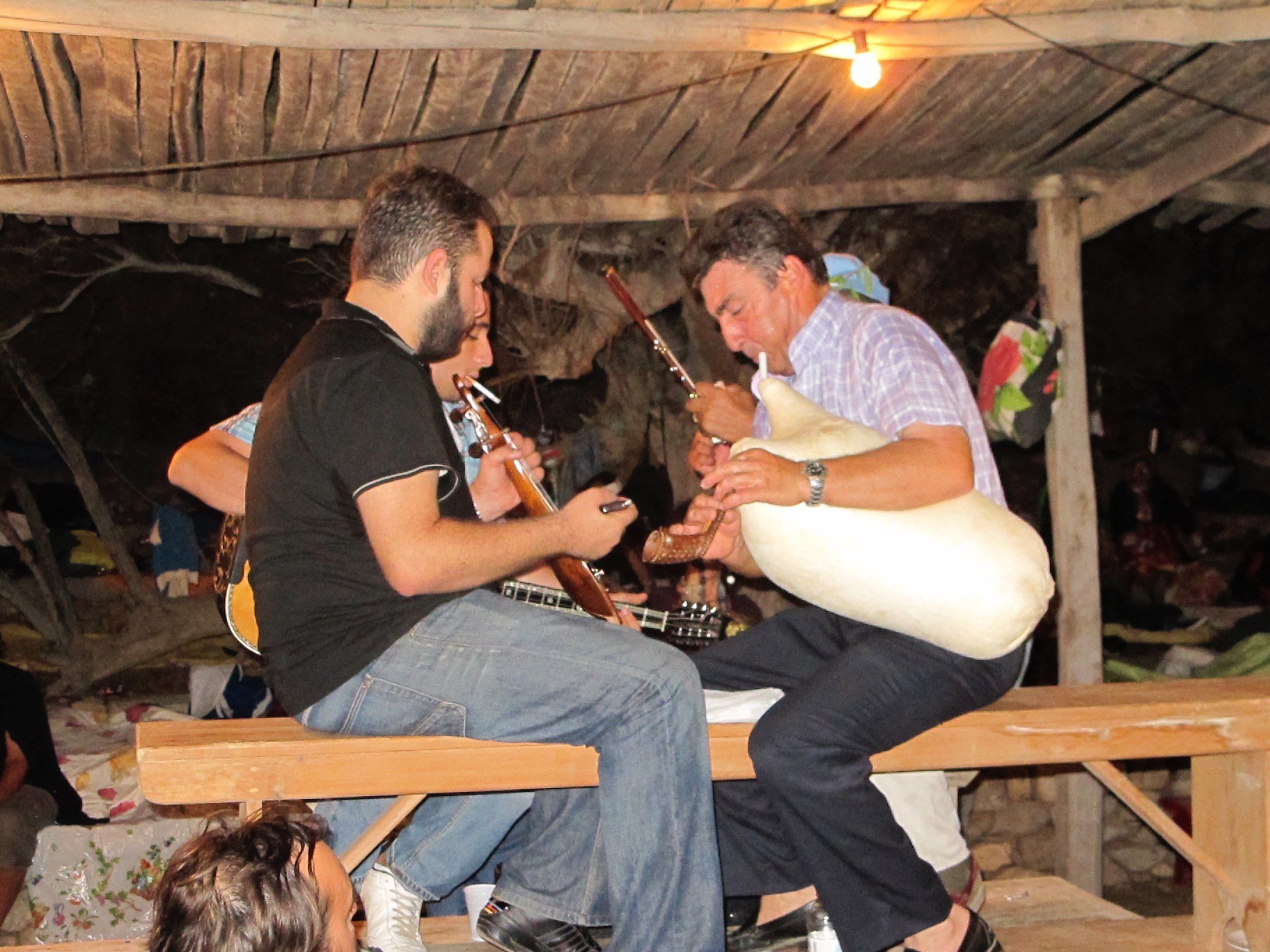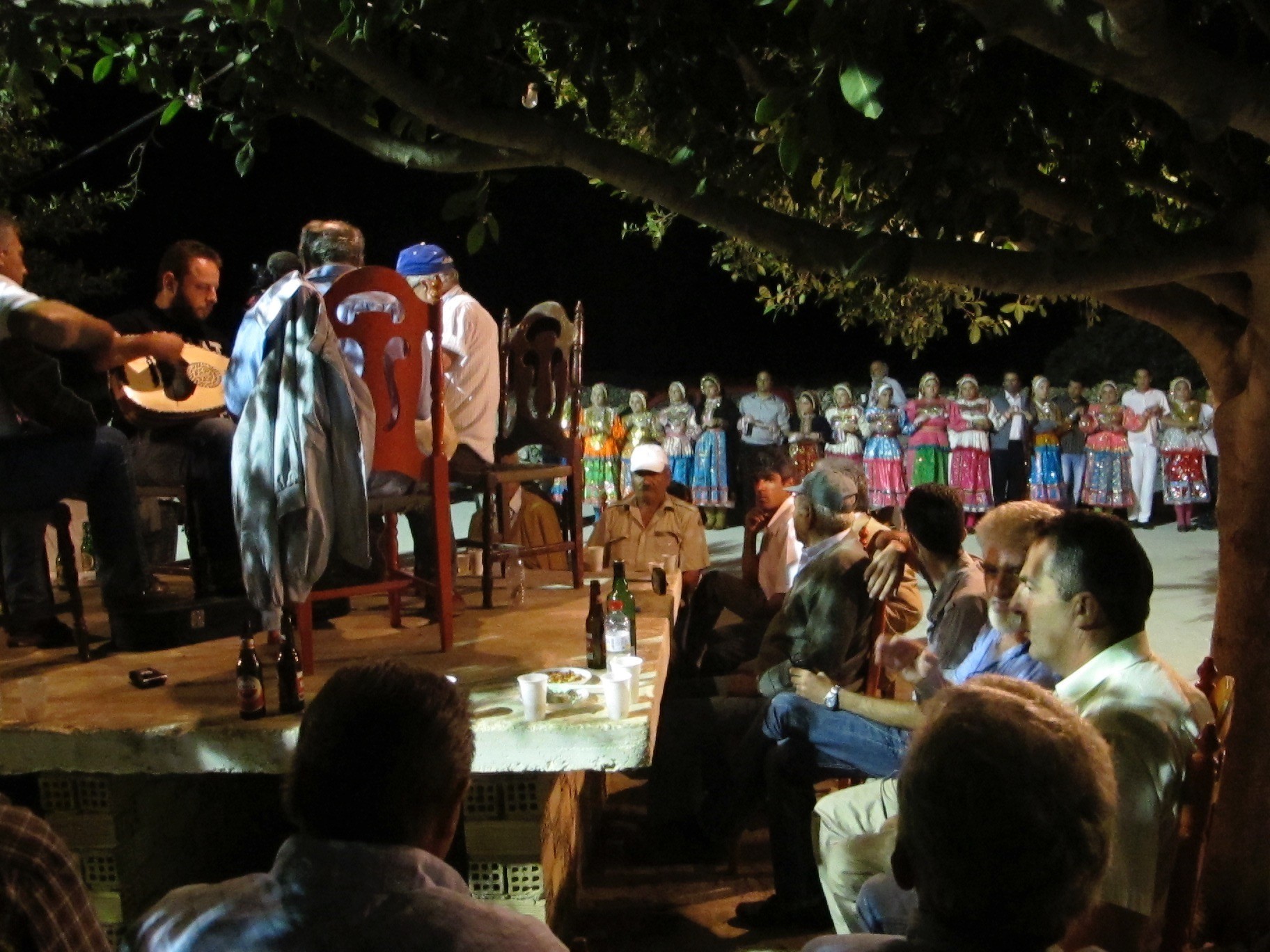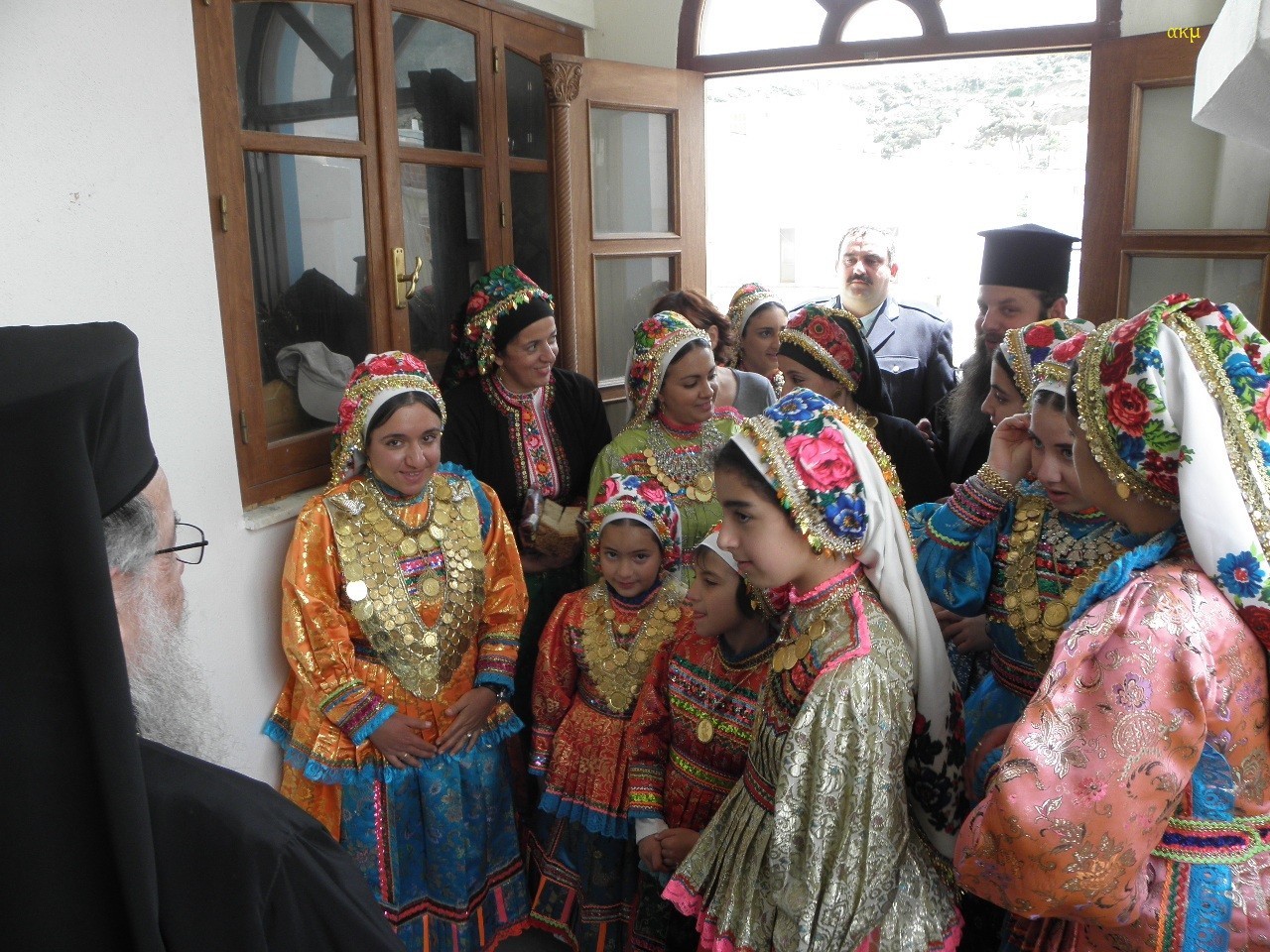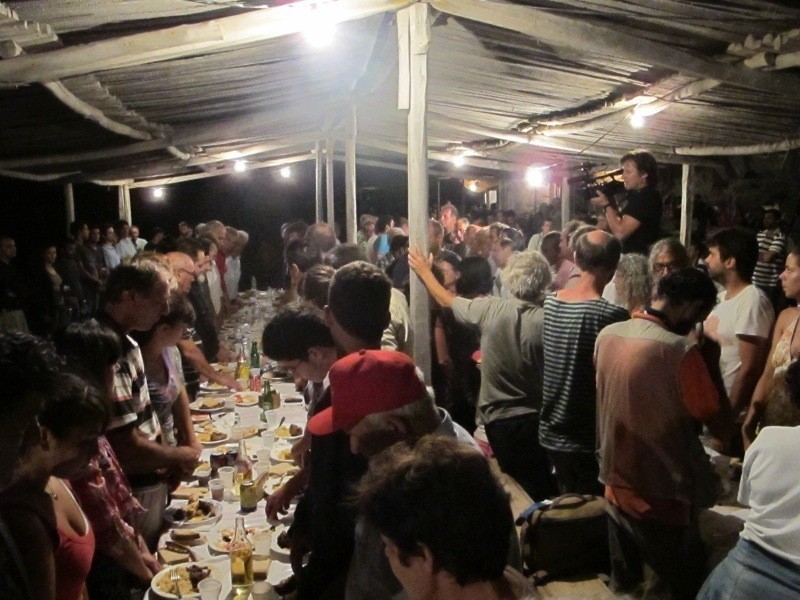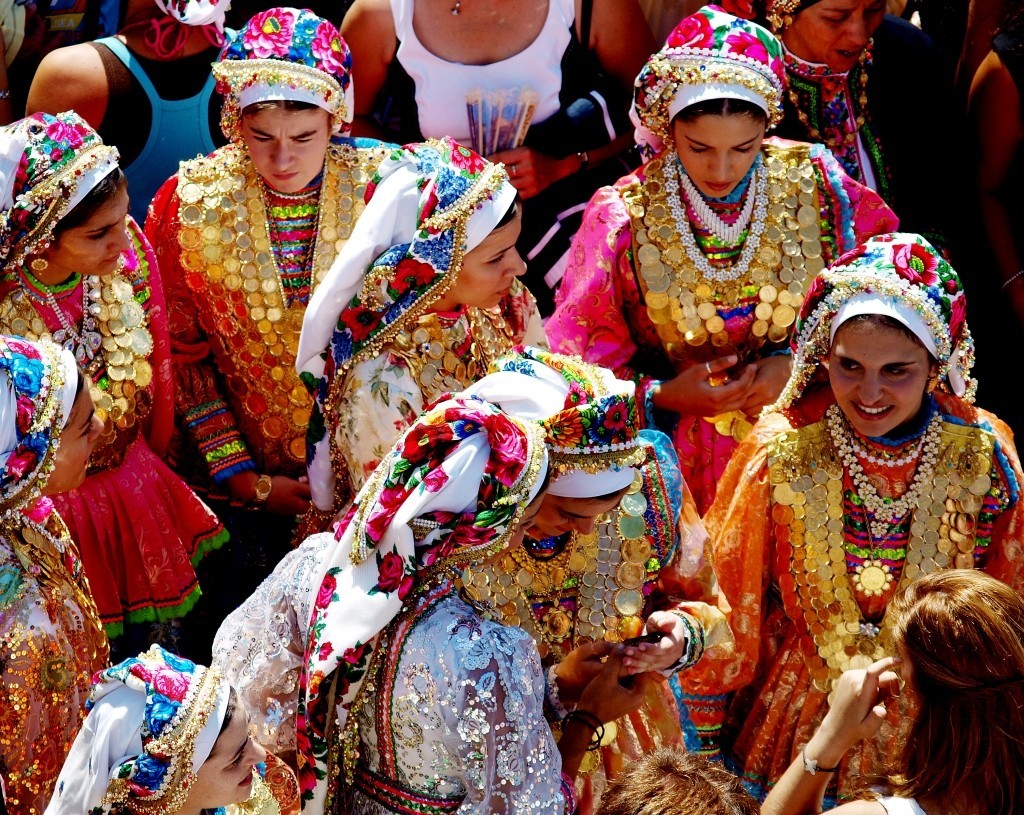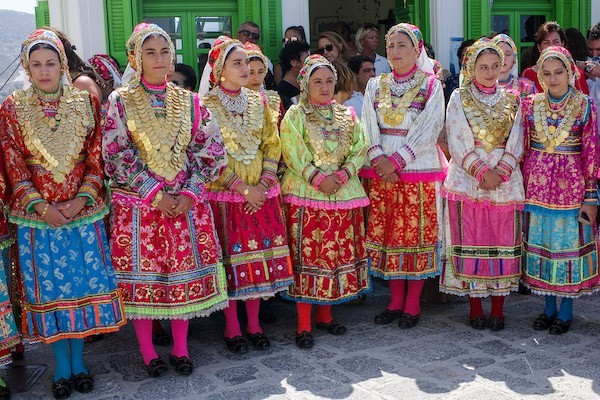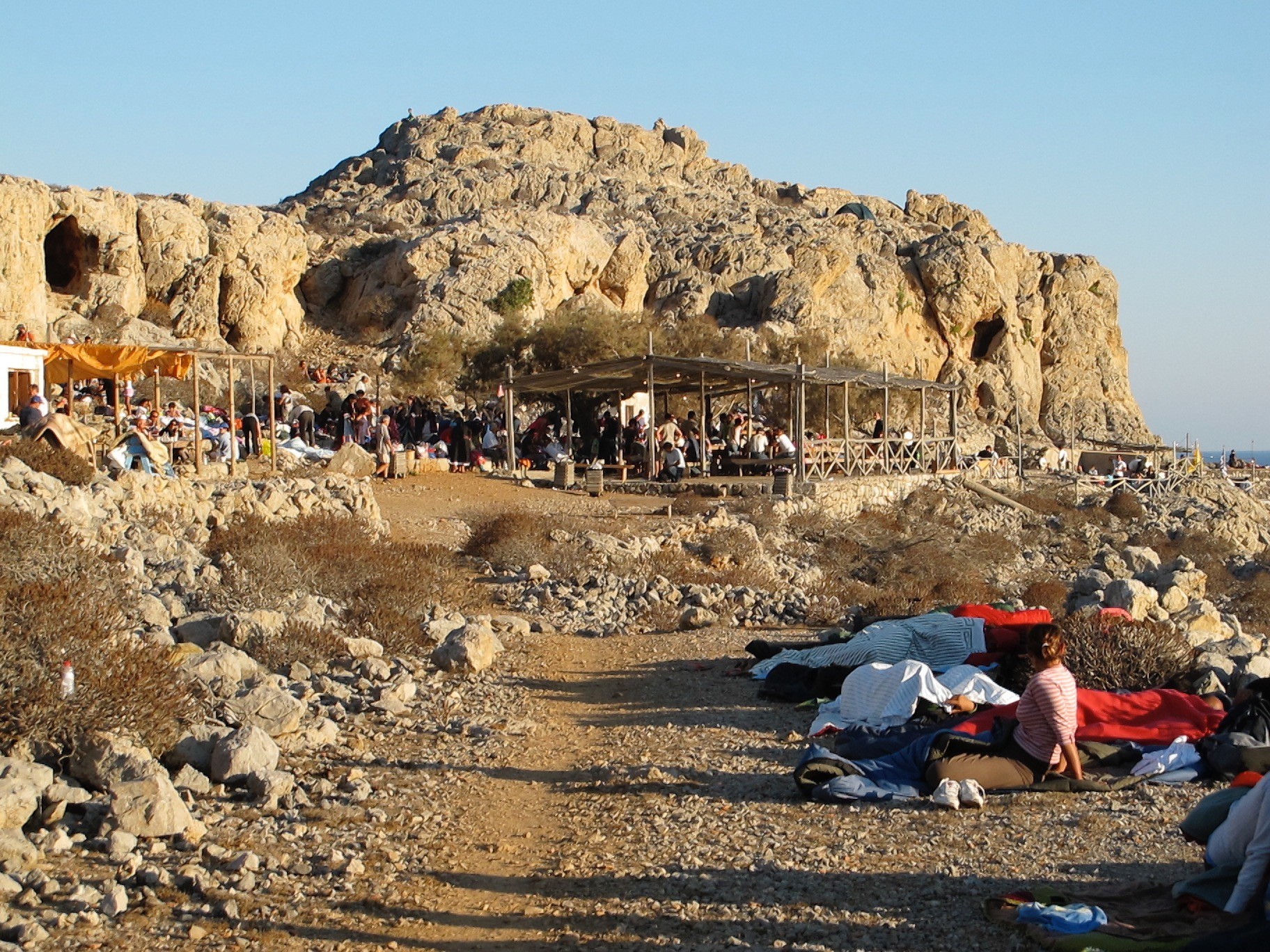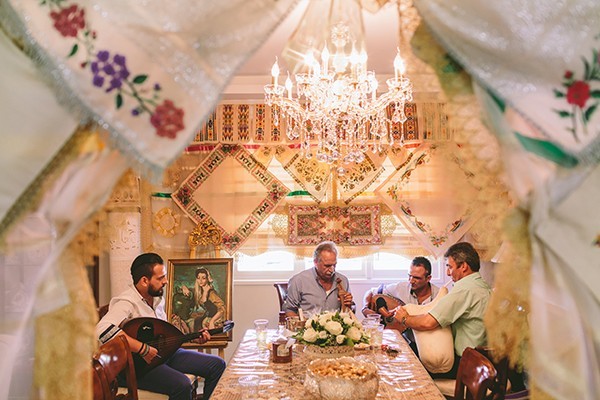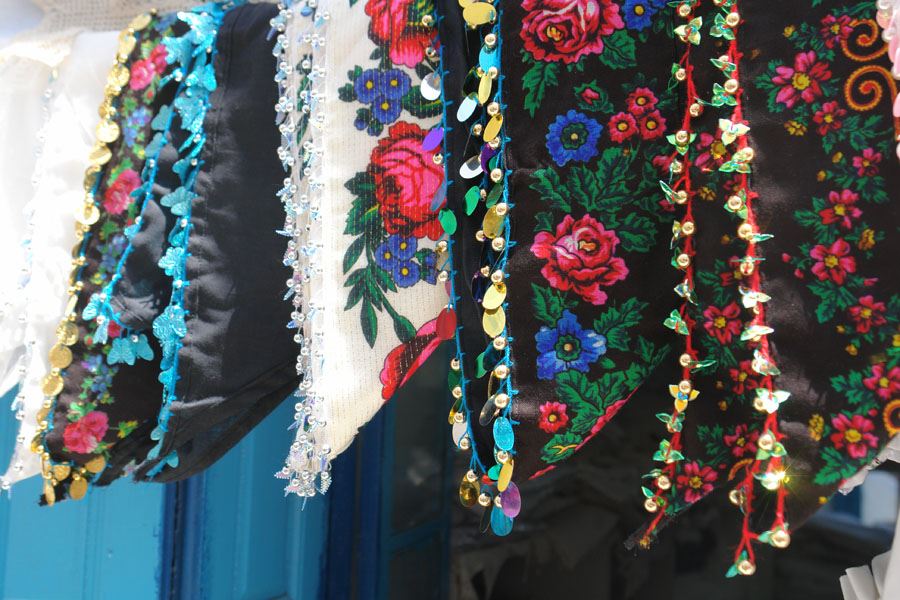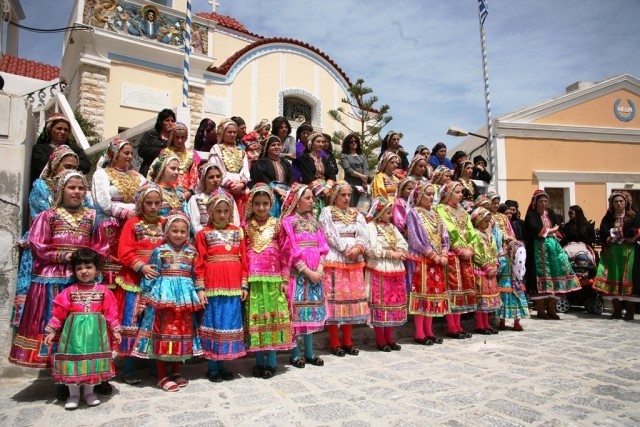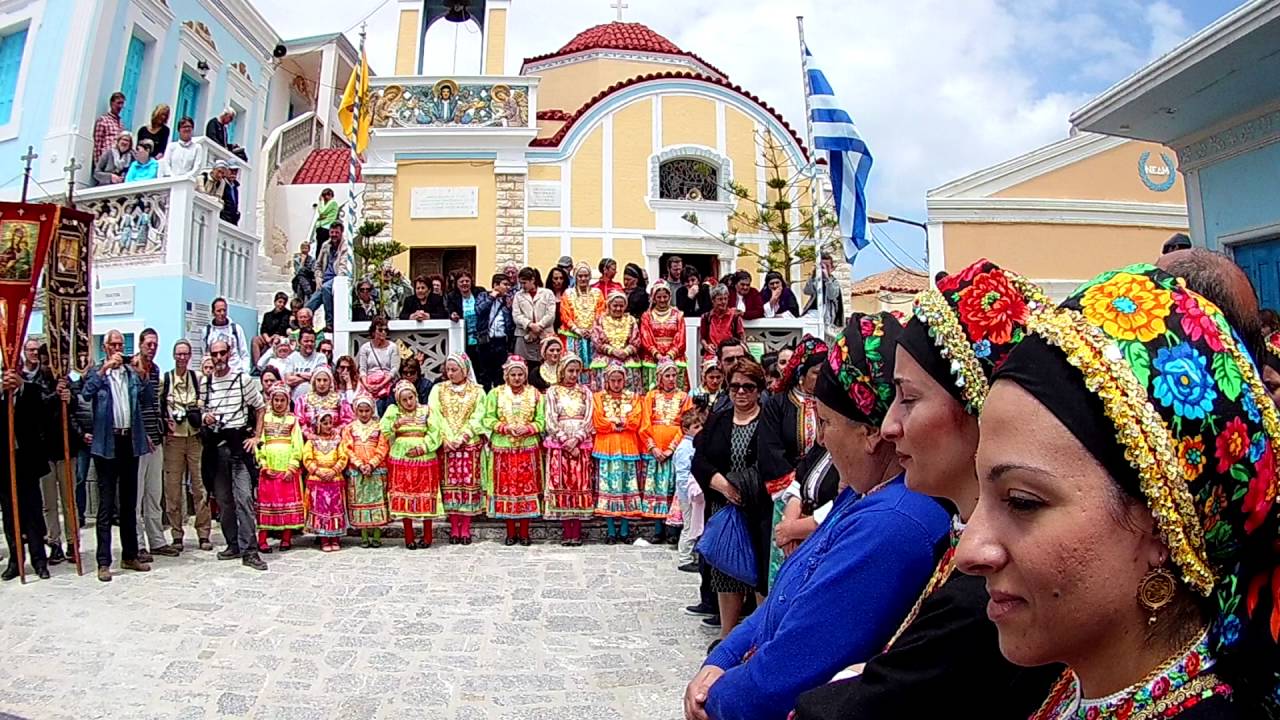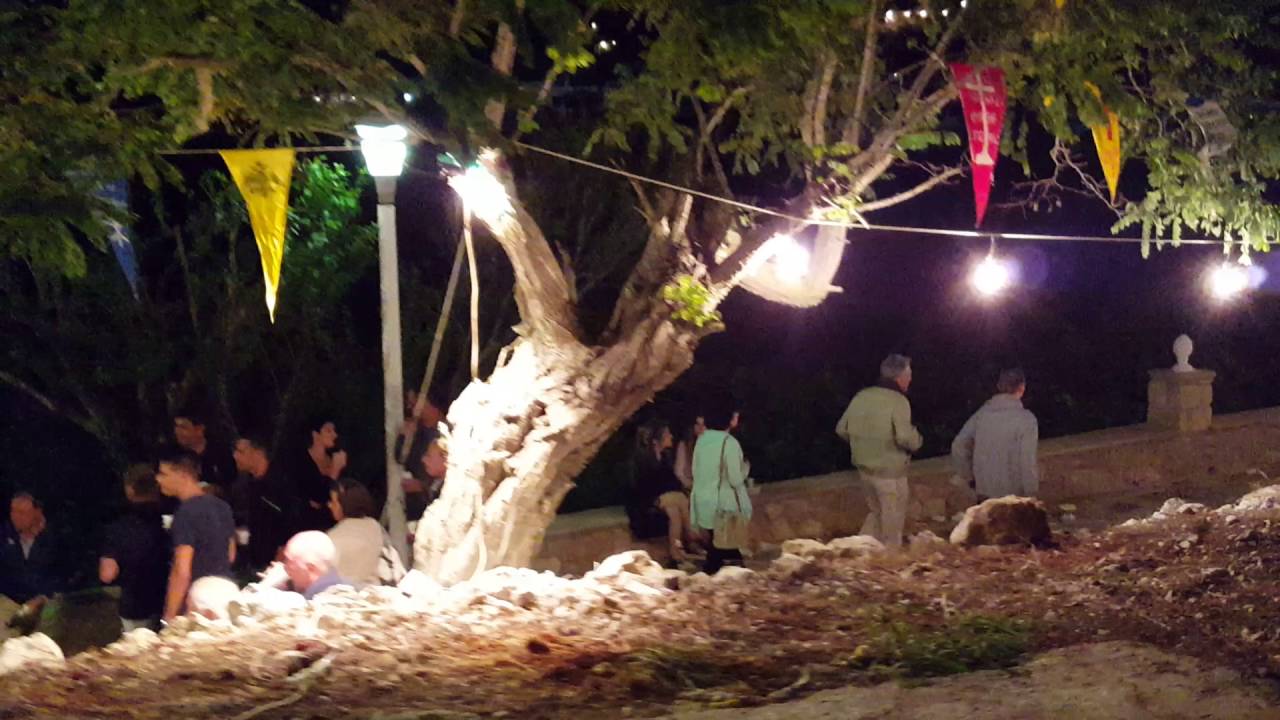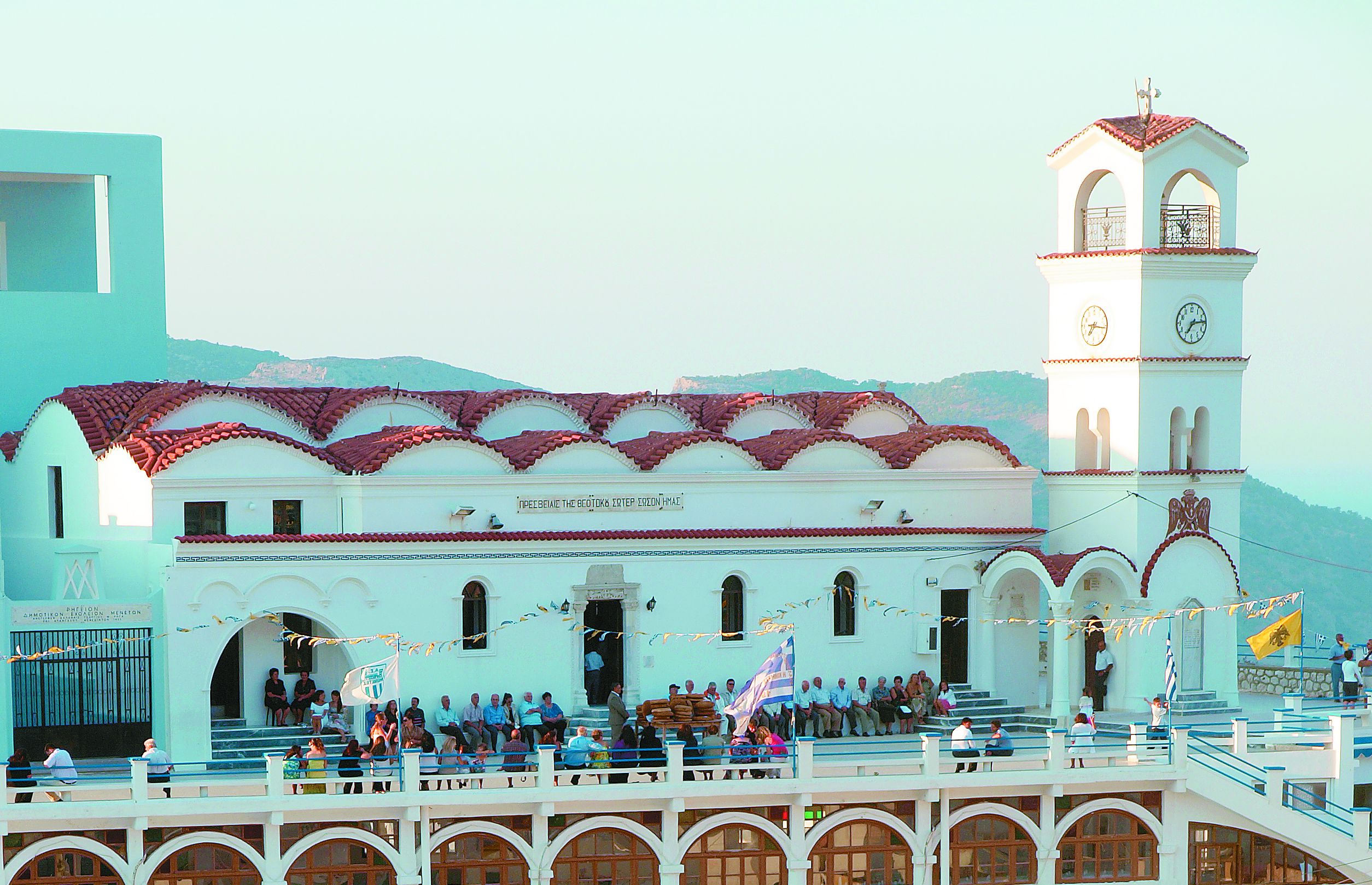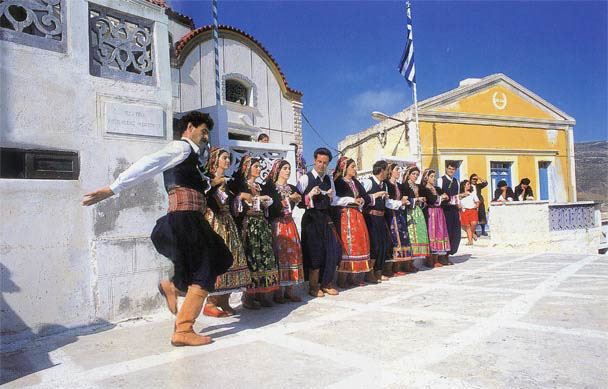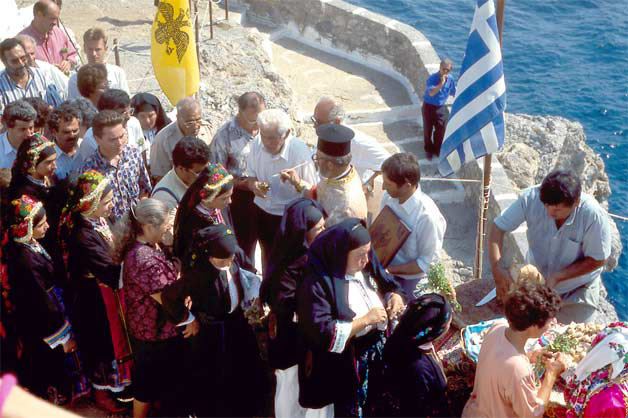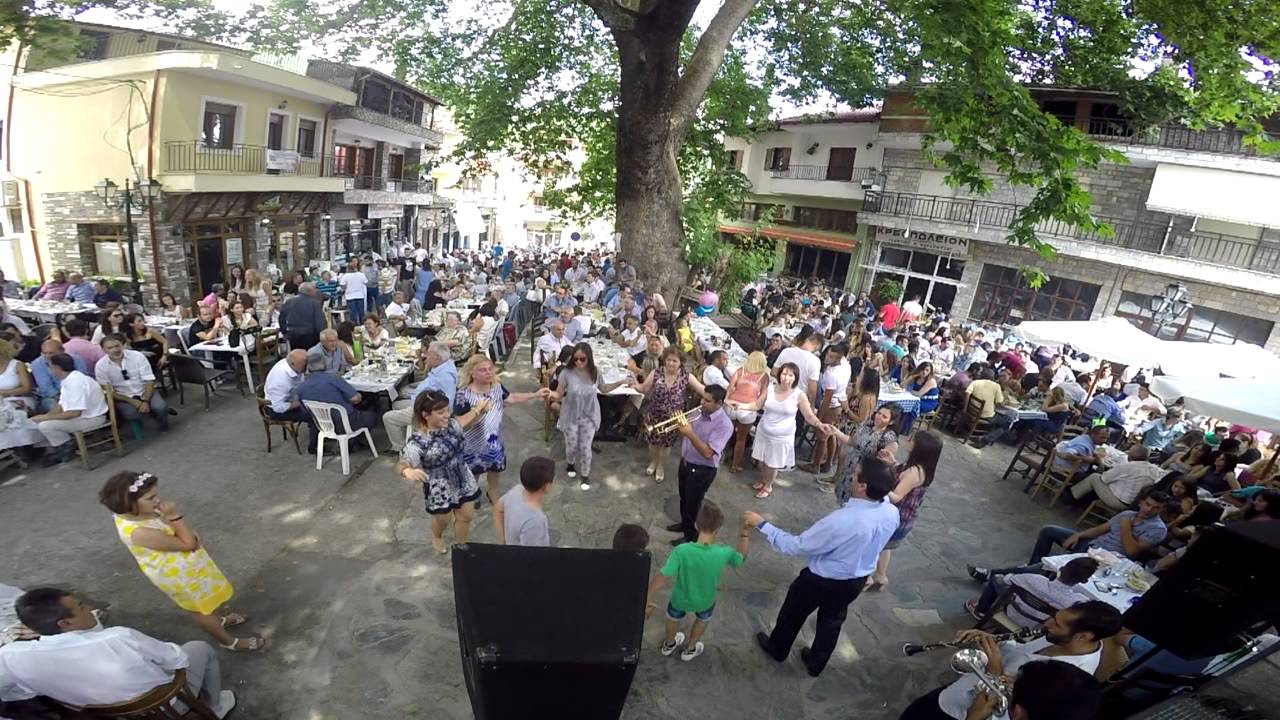Karpathos, rich in local traditions, is famous for its festivals.
The customs of the island are kept unchanged from generation to generation and their rituals do not change. Their main characteristic is that traditional food, cooked by the Church, is offered free of charge to all believers, followed by a big feast with dances and songs.
The songs that are often heard at wedding celebrations, baptisms or festivals are old, with improvised recordings and accompanied by the traditional instruments, the lyre, the tsambouna and the lute.
In every village of Karpathos there is at least one central temple dedicated to its patron saint, which is celebrated by the Karpathians in a way that seems to be related to the early Christian ‘agape’. It is noteworthy that many of these chapels belong to families who look after them, maintain them and organise festivals in honour of their saints.
On 15 August the whole island celebrates and there are feasts in Aperi, Diafani, Menetes and Olympus, while on 8 September Panagia Mesochoritissa is celebrated in Mesochori.
Click on the button below to see the festivals in each village of Karpathos (select each village to see its festivals).
Important local events
Festivals per village
Feast of the Assumption of the Virgin Mary in Olympus of Karpathos
The festival of the Assumption of the Virgin Mary in Olympus of Karpathos is one of the most solemn. In this place, the liturgies are deeply connected to the mourning that characterizes this juncture for Christianity and the highlight of the traditional celebration is the dance that takes place in the small square in front of the church of Panagia, with the instrumentalists playing the Kato Choro, slow and serious. At first, the men are seated at the table and with a piece of basil on their lapels, singing and drinking to the accompaniment of lute and lyre. As darkness falls, the dancing begins, and the women, dressed in their traditional festive costumes of stunning beauty and splendour, slowly join in. The dance, slow and always with a steady step and a solemn mood, lasts for hours and the whole atmosphere is one of the most beautiful that the believer can experience in the festivals of the Aegean.
The monastery of Agios Ioannis, in Lakki, is located in the cave of Cape Vroukounda and is celebrated on August 28, with a celebration that lasts two days and nights. Locals set out from Vlora on foot or from Diafani by boat on the eve of the feast. Once they arrive, they set up their supplies and start a big feast, partying and dancing until dawn. After the sun has risen, the locals sleep on mattresses laid out in the open space outside the cave. The next morning they attend the church service and continue the feast until the evening.
Halloween in Karpathos
In Othos, from the morning of Holy Monday the feast is set up in the café. They eat, drink and commemorate their dead. They take out their instruments and begin the mantinas, which speak of those who have died recently or even before and their absence is still felt or refer to the ephemeral nature of life. The excitement peaks and then the mood becomes lighter, the merry songs begin and the first kamuzelles, or masqueraders, make their appearance.
The celebration continues in the Megaron, in the specially designed area for gatherings and dances. There begins the “Court of Unethical Acts. Men dressed as women bring before the Kadi men dressed as men or dressed as nothing, with various satirical accusations. Depending on the Kadi’s talents and the preparation of accusers and accused, very spirited dialogues are negotiated. In the end, no one is acquitted. A conviction is a fine that is actually paid.
At the same time, the instruments are playing in another part of the Great Hall. Already by noon people from all the villages have begun to flock in, most of them masqueraders, forming a colourful panic of streamers, mutsuns, treats, music and noise. Meanwhile, the Piperio dance is also being set up:
Those who want to dance go up on a prominent platform. Only men, only in costume and not too many to be seen. The cavo (top of the dance) has a lura and oversees that everything is done as it should be. The Lower Dance begins, with songs and mantras of profane and sexual content. After three or four minutes of dancing, comes the verse, “How do the devil’s peppercorns rub the devil’s pepper? They rub it with their noses and rub it twice.” The dance is broken up, they rub the pepper with their noses, the top man hits anyone who doesn’t do it right with the lura.
In Othos the pepper is not rubbed on the ground, as in other places and as is the “normal” way, but with each other. This sometimes creates some hilarious clusters. The dancing resumes, and they continue with the fuck songs and the steps of Kato. After a while the pepper comes back. They rub it on another part of the body, eat some, and the same story continues.
Easter in Karpathos
Easter in Karpathos is the ultimate religious experience. As all celebrations and events are experienced by the locals with passion, so too Easter, the people of Karpathos and especially the Karpathians identify with the sad event of death and the joyful one of resurrection and experience the great feast of Christianity intensely emotionally, creating a ritualistic atmosphere that is hard to find in Greece today.
In Olympus, women decorate the Epitaph and put photos of the persons who have passed away this year. Once they put the Epitaph in the church they leave their hair simple and mourn, in a peculiar ritual.
On Easter Sunday the whole island revels to the rhythms of the lyre and lute, while on Easter Monday the women make cakes and go to the cemetery to decorate the graves and dedicate them to the dead.
Wine Festival in Lasto
In Lasto, in Volada, the wine festival is held every year, where many people gather to taste the “Adam’s wine”, made by the locals in their traditional wine presses.
Carpathian wedding
The Carpathian wedding takes place on the island in a special way and the preparations take a week.
The wedding in Olympus is an affair of the whole village and is celebrated for three days. On the wedding day, locals, friends and relatives “call the bride”, go to her house and take her from her parents to accompany her to the church playing musical instruments and singing mantinades. Once the sacrament is over, a feast follows, where the women are allowed to sing! The songs and mantinades sung at the beginning refer to the relationship between the bride and her parents and contain wishes for her new life, so that the bride is moved. This is followed by the bride’s gilding, when the guests fill her sack (traditional wedding dress) with gold jewellery or money. The women wear colourful traditional dresses, with double rows of flounces on the chest and fancy scarves on the head.
Sources:
https://karpathos.travelfind.gr
http://www.wondergreece.gr
APERI
- The church of Agios Charalambos celebrates on February 10.
- The Church of the Transfiguration of the Savior, on August 6.
- The Church of the Assumption of the Virgin Mary, on 15 August.
- The chapel of Our Lady of Merton, on August 23.
- The chapel of Panagia (or Kyra Panagia), on August 23.
ARKASA
- The Church of the Assumption of the Saviour celebrates on 2 February.
- The church of Agios Nikolaos in Finiki celebrates on December 6.
VOLADA
- The Nativity of the Virgin Mary, September 8.
- Archangel Michael in Lasto on November 7.
MENETES
- The church of the Assumption of the Virgin Mary is celebrated on 15 August.
- The church of St. John in Afiarti celebrates on August 29.
- The church of Agia Marina on 17 July.
MESOCHORI
- The church of Panagia Vrisiani celebrates on 8 September.
- The church of George the White on Easter Tuesday.
OTHONOS
- The Transfiguration of the Savior is celebrated on August 6.
- St. Panteleimon in Ctes on July 27.
- The chapel of Panagia Gynatos on September 8.
- The church of St. Simeon, September 1.
OLYMPUS
- The other Virgin Mary, on the feast of the Annunciation, on 25 March.
- The Second Resurrection takes place on Easter Sunday and is the main Resurrection for Olympus and the Olympians.
- The feast of Zoodochos Pigi takes place every Labrador Friday, in Diafani.
- The feast of St. Panteleimon takes place in Sharia on 26-27 July.
- The feast of the Transfiguration of Christ the Savior is held on August 6.
- The Church of the Assumption of the Virgin Mary is celebrated on August 15.
- The Church of St. John in Vrukunda on August 29.
- The feast of the Nativity of the Virgin Mary is on September 8.
- The feast of the Exaltation of the Holy Cross is organized on September 14 in the area of Potamos.
- The festival of Archangel Michael (the Paliarmotis) is held on 8 November in the small seaside settlement of Tristomo.
- The festival of Agios Minas is held on 11 November in the area of Filios.
PIGADIA
- The church of the Annunciation of Theotokos is celebrated on 25 March. Panagia Evangelistria is the central church of Pigadia and the first church the visitor sees from the sea. It is celebrated solemnly on 25 March and its festival is one of the biggest on the island.
- The church of the Holy Apostles is the second big church in Pigadia and is celebrated on June 30th.
- The chapel of Panagia Larniotissa, on September 7.
- The chapel of Zoodochos Pigi, on Easter Friday.
PILES
- The Church of the Assumption of the Virgin Mary celebrates on 15 August.
- The Church of the Exaltation of the Holy Cross celebrates on September 14.
SPOA
- The church of St. George (Methistis) celebrates on November 3.
- The church of Eftapatousa in Agios Nikolaos celebrates on August 23.
- Agios Nikolaos on December 6.


